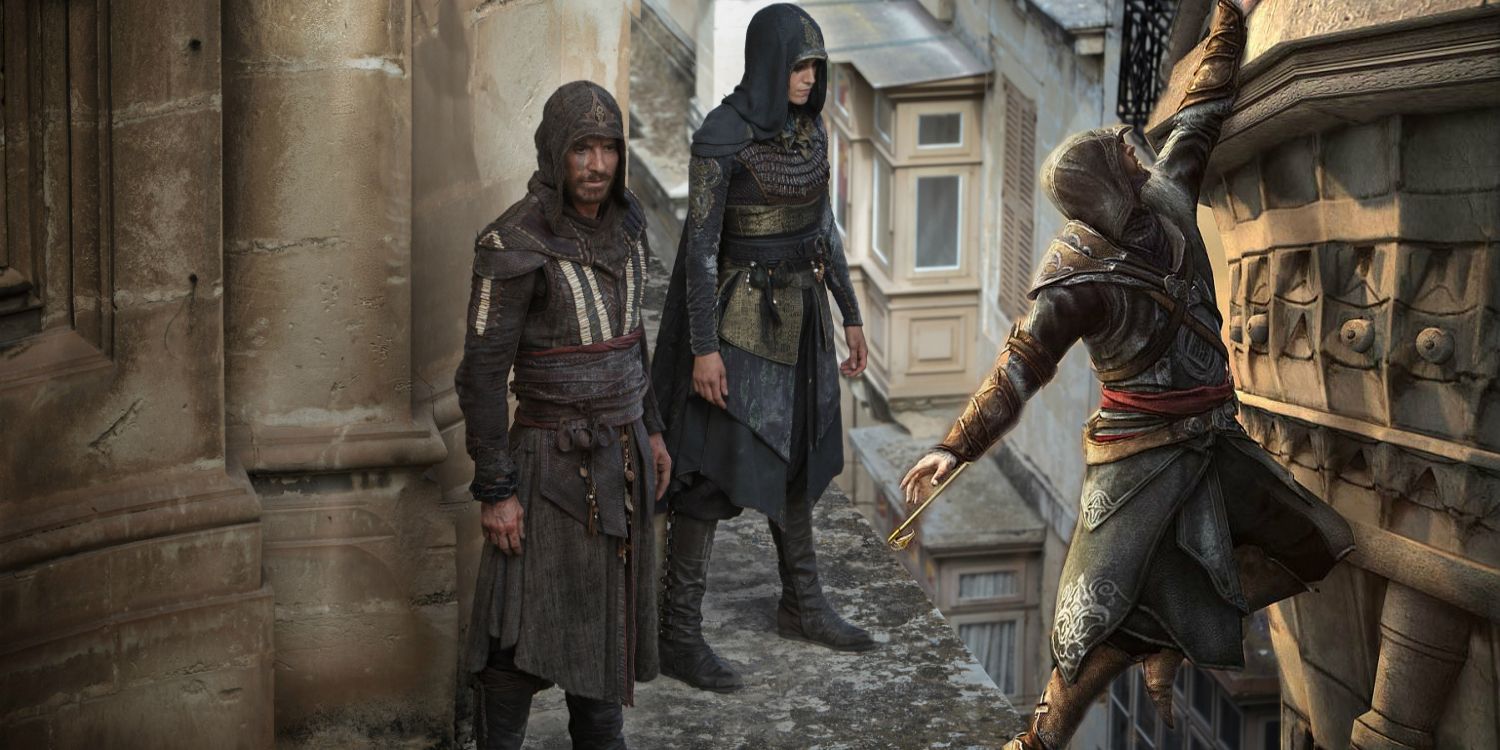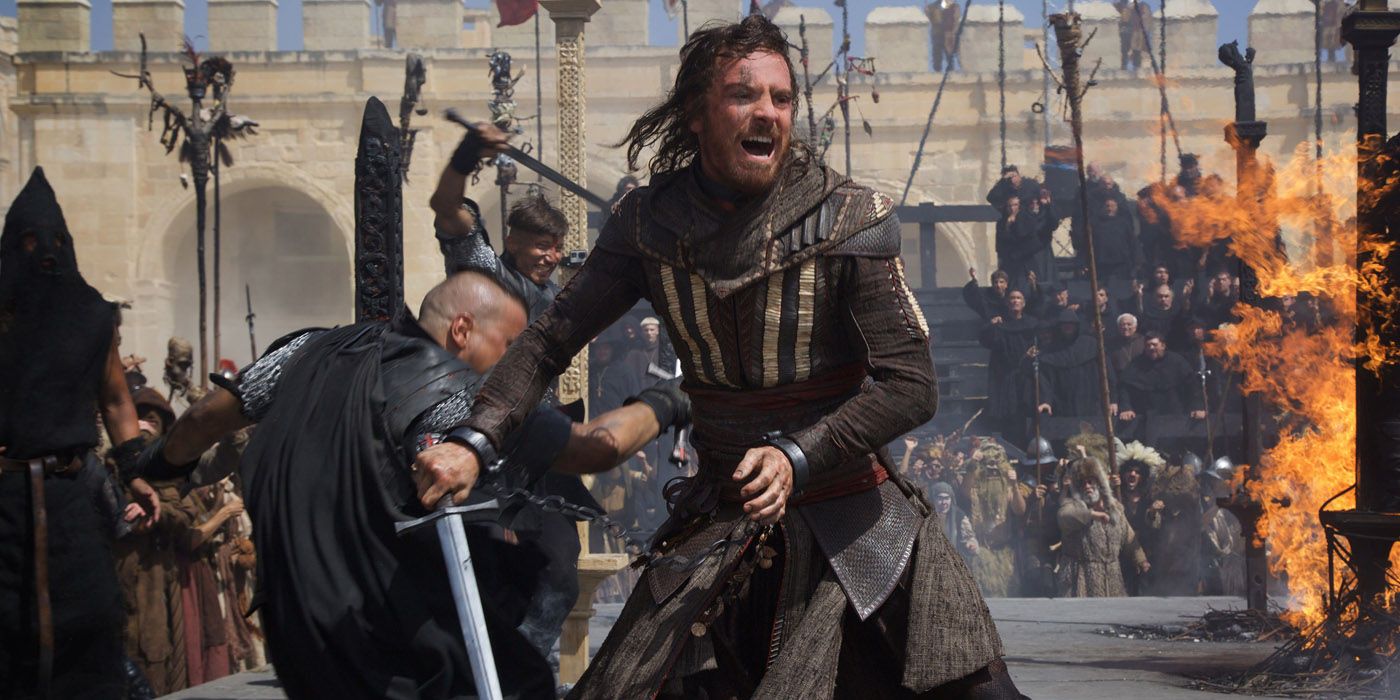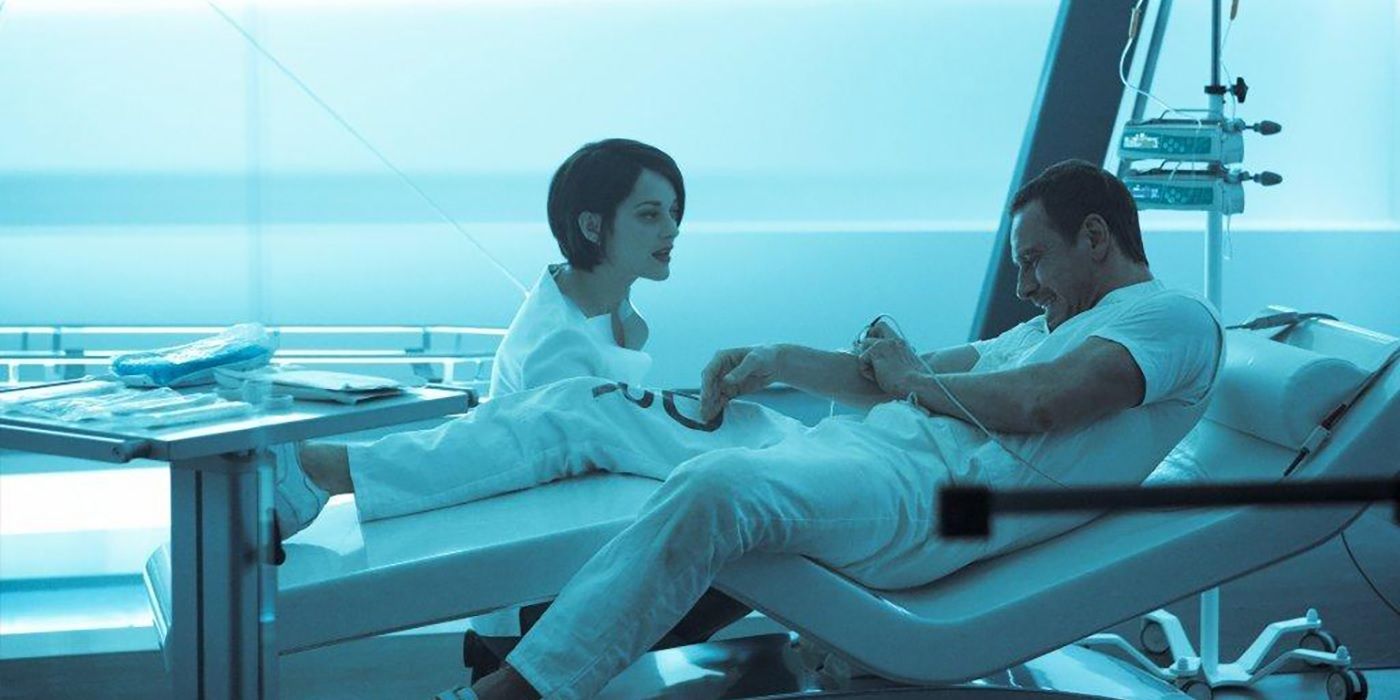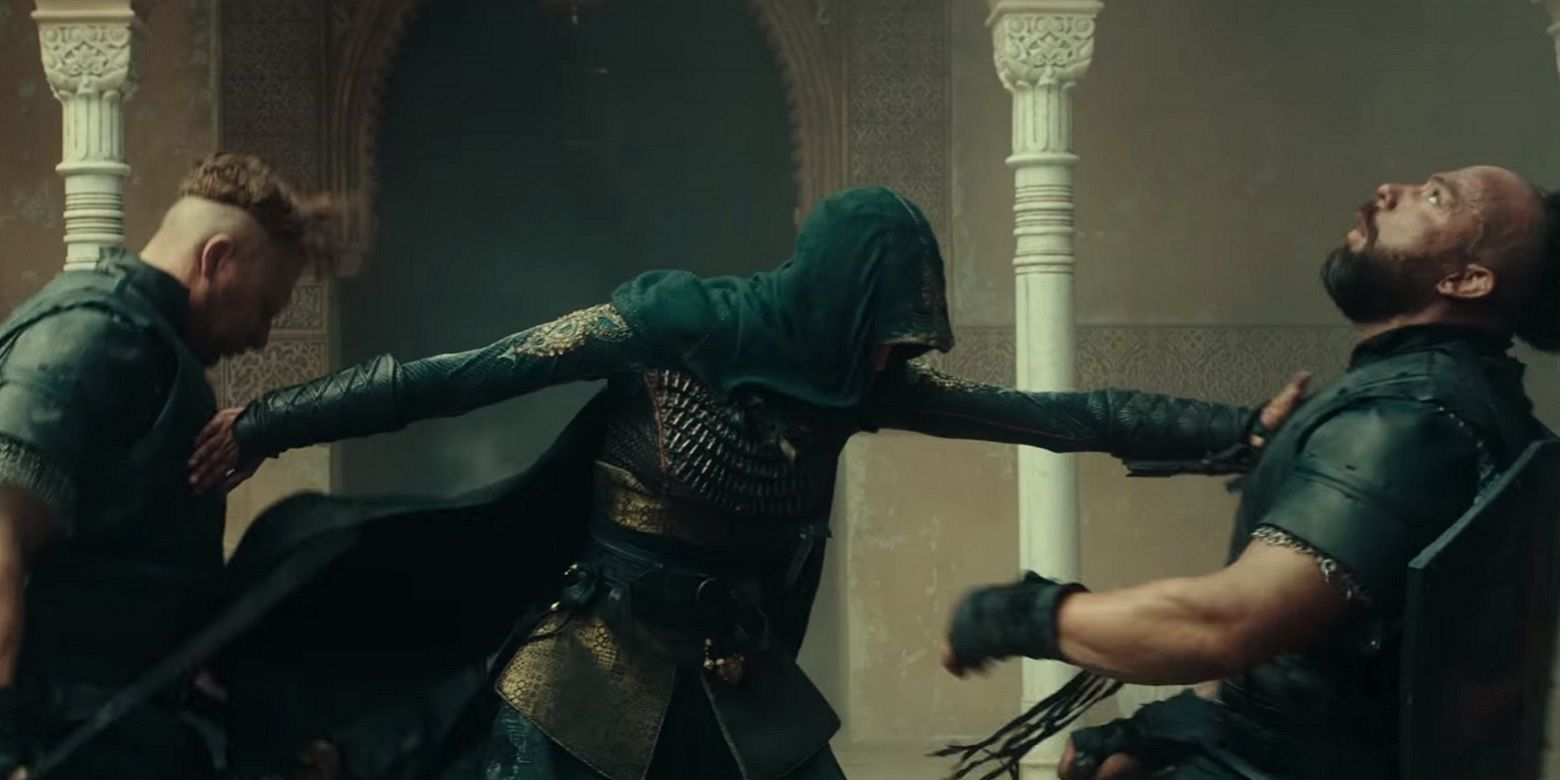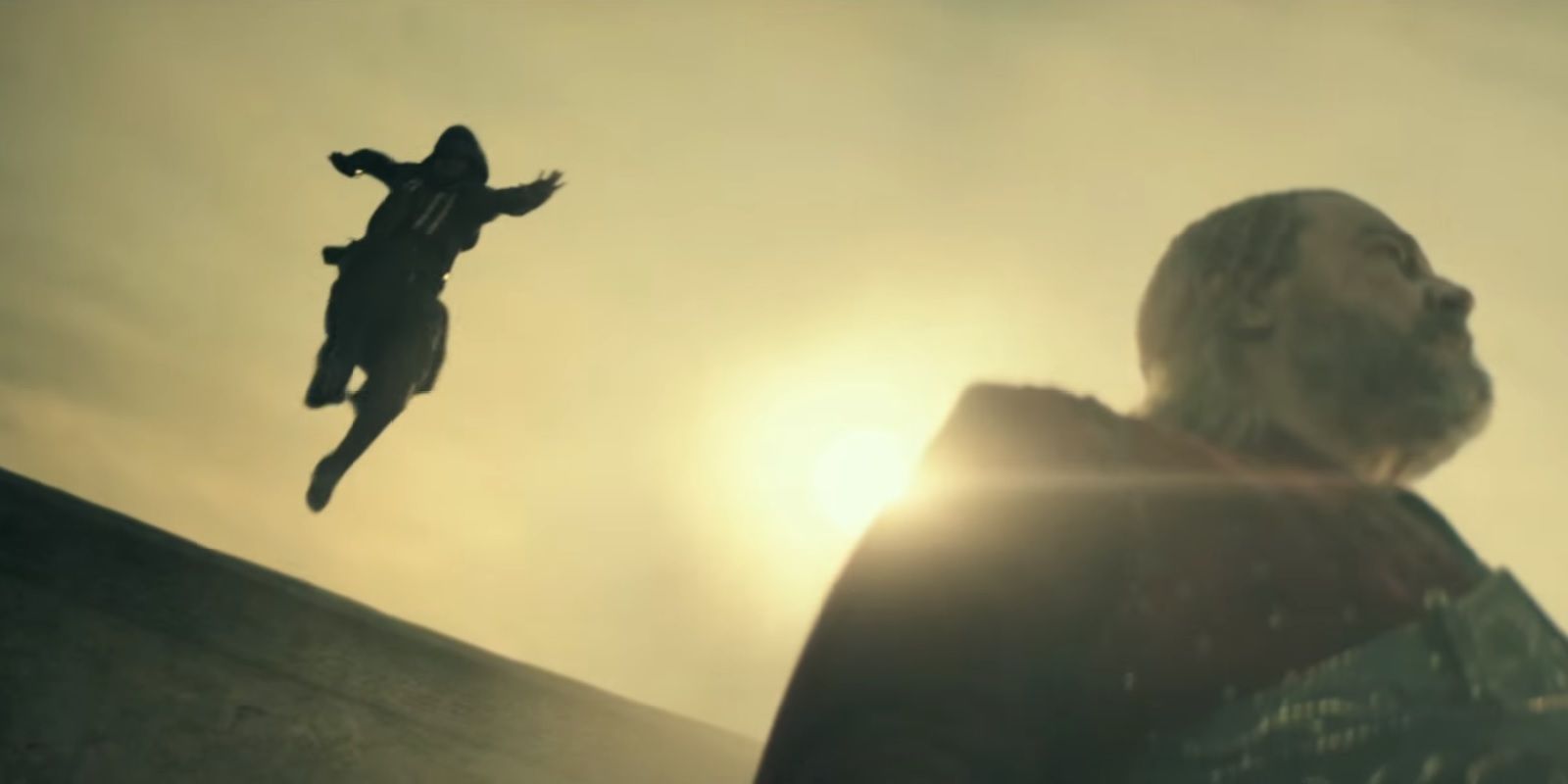The world of the Assassin's Creed games spans the entire globe and the entire history of human civilization - from Adam and Eve (it's complicated) all the way up to the 21st century. For those involved in creating a movie based on the games - producer and star Michael Fassbender, director Justin Kurzel, and screenwriters Michael Lesslie, Adam Cooper and Collage - this left an enormous number of options to choose from when selecting the setting of the film's historical segments. Ultimately, it was 15th century Spain that won out, and the bloody history of the Spanish Inquisition.
In addition to creating these historical scenes (which constitute approximately one third of the film's running time), there was also the challenge of bringing to life the video games' modern world, which includes the warring factions of the Assassins and the Templars, who now hide behind the corporate face of Abstergo Industries. It's Abstergo that snatches Fassbender's modern character, Cal, from the jaws of execution and whisks him away to a top secret facility in Spain, where he is forced to relive the memories of his ancestor, Aguilar, by way of a machine called the Animus.
All of this will sound very familiar to fans of the games; barring the character details and historical settings, it's more or less the plot of the very first Assassin's Creed game. And with Ubisoft maintaining a strong creative presence in production (the video game developer and publisher recently created a film production branch, Ubisoft Motion Pictures, which co-financed the movie with Regency Pictures), the filmmakers had all the resources they needed to bring the aesthetic and physicality of the film to life.
During our visit to the set of Assassin's Creed, we got up close to the sets, costumes and weapons that will be featured in the movie, and spoke to the people who made them. What we found out will give fans of the games - and even people who've never played them at all - reason to get excited. This is how the Assassin's Creed movie brings the video games to life.
The Spanish Inquisition
One of the biggest challenges of filming historical movies is eliminating all touches of the modern from location shoots. There are a number of ways to get around this; some directors choose to create entirely CGI environments, others build huge sets, and where possible location scouts try to find places that can pass for historical settings. For Assassin's Creed, production designer Andy Nicholson used a combination of all three.
"One of the most difficult things, actually... is the fact that the period regression was 15th century Spain. There is nowhere, really, where you could shoot a city scale version of that scene... We used Valletta and Malta because it had a great amount of surface texture detail. It’s a small capital city that is stuck on a peninsula in the middle of the sea, so it’s really aged and run down.... I mean it’s not Spanish. It’s not the same city it would have been. It’s sort of a similar road plan from parts of Seville, but not the older parts."
Using Valletta, Malta's capital city, essentially got the filmmakers close enough to 15th century Spain that any anachronisms and details that gave away the set as being in Malta could be cleaned up and altered in post-production.
"It was mainly about the texture that gives you so when you are altering, in post... 70% of what you see is fine and we were just creating and refining details to make the period correct. And the space really had a scale it gave us because of the height of the buildings, the narrowness of the streets, and the depth that you can get was really important. So that was the most important thing to take into account."
Easily the biggest scene filmed on the Malta set was the auto-da-fé, which can be seen in the trailer, where Aguilar and his fellow Assassins are put on display for their crimes (and break free). "We built a huge, dramatic, gothic woodwork black set of bleachers overlooking the stage where the inquisition was happening," Nicholson explained. "That was with 800 and something extras all in costume, along with the king and the queen and the inquisitor. That was a huge scene."
Abstergo & The Templars
In stark contrast to the scenes set in 15th century Spain, which use a color palette that costume designer Sammy Sheldon describes as "very warm and fire and earthy and vibrant," is the modern set that was built for Abstergo Industries - the set that we explored during our visit to Pinewood Studios. The facility is also in Spain, but set into the side of a mountain and built within the ruins of an old Templar church - a clash of old and new. As Nicholson explained, every aspect of the facility's design is stark and claustrophobic:
"This building has no windows. You could escape from this building, but if you just woke up in it, where the f--- would you go? You run down the corridor and it’s like there’s a staircase that doesn’t go anywhere. That kind of stuff; that’s sort of the embodiment of that within this building."
The architecture of the Abstergo building is reflected in the costumes of the "patients" (we are told that they are not prisoners, though the characters themselves might not agree), who wear plain grey pyjama-like clothes with the Abstergo logo at the nape of the neck, and no other decoration. Perhaps the most interesting thing in Abstergo's facility, however, is the Animus - the machine that allows people to relive the memories of their ancestors by tapping into their DNA. The Animus, was completely redesigned for the movie, as Nicholson explained:
"The most challenging was coming up with the new Animus machine, the variation of what that was, because that was a radical departure from what’s in the game, a much more visually developed, specifically for the movie, playing with the sort of motifs and ideas that were in the game in terms of what the regression is all about, but taking it to a much more photographically interesting level, a much more performance-based level than currently in the game... When you cut back to someone they can’t just be twitching."
Nicholson also offered some intriguing hints about how the regression works. We asked if it's like it is in the games, with the subject experiencing a strange white and blue virtual environment (which serves as a loading screen) where the memories are built. Nicholson says that this does not appear in the movie, and that there is instead a whole new approach to the regression:
"We’re doing a lot of that with the visual effects that lead you into…the transition of that is dealt with in the way that we play the Animus machine and the actual chamber it occurs in. There’s much more of a crossover in the movie than there is in the game. You don’t sort of pass out and then see an effect and then you are back in time... It’s important for the witnesses watching in the regression to be able to see what’s going on around them. So there’s much more of a physical projected crossover whilst you are on the outside watching, which is one of the most interesting things about the way we’re doing the regression."
Based on this, it sounds like the Templars - particularly Marion Cotillard's character, Sophia Rikkin, and her father Alan Rikkin (Jeremy Irons) - will be able to observe Aguilar's surroundings through some kind of holograph projected within the Animus chamber. This is something that hasn't really been shown in the trailer, so it will be interesting to see it in action.
The Assassins
Of all the things included in the set tour, easily the coolest was the reveal of the modern Assassin wristblade. Though the wristblades in the game grew steadily more ornate and elaborate, modern Assassins require something a little more easily concealed, which cannot be discovered in a basic pat-down search, nor trigger any alarms on metal detectors. The wristblade is assembled from pieces of a pen, a watch, a phone, a shoe, and a belt - all items that will appear innocent when examined individually, but which come apart to form components of the deadly weapon.
Though the modern wristblade design was created for the movie, there are plenty of recognizable weapons from the games (weapons master Tim Wildgoose was already a fan of the series), including Connor Kenway's bow from Assassin's Creed III. We know that some of these weapons may end up being used on screen, since at least one Assassin from the video games is confirmed to make an appearance, along with potentially others, but Wildgoose says that many of them are for display purposes only - perhaps part of Abstergo's collection.
Along with the wristblade, the most iconic component of the Assassin "look" is the classic robe with its beak-like hood. "Everything is hand done.... I’ve got a team of 85, and we have teams working on each assassin," Sheldon revealed. Just as the brief for the weapons was to make them both functional and beautiful, Sheldon told us that Kurzel wanted the clothing to feel "ancient and beautiful, and very traveled and worldly." And, of course, it didn't hurt to have so many games to use as a reference point.
"[The most challenging costume was] probably Michael’s costume, the Aguilar costume, because we had to design that one first in order for us to set our version of the Assassin. So we started with him, pulled all the ideas from the 15th century Spain Moorish influence and then the tribal, nomadic influence, put that all in together. And we also have the kind of guidelines of what the game involves in terms of the iconography of an assassin with particular lines of the body and the shape of some of the clothing.
"We constantly ask Ubisoft for any reference that might help us in order to make our own versions... One of our biggest challenges, I think, was how to work the hoods out. Because if you are dealing with a digital image, you can manipulate the surface of anything from shot to shot. But when you put a hood on somebody, it covers their face, it moves all over the place... We’ve probably been through 20 or 30 version of the hood before we got to a point where we could say, 'All right. We know where the seams to be in order for it to fit on the head to look like the game.'"
As for where the Assassins themselves live, Nicholson said that the Assassin den was "a fantastic location we’ve got in Spain, a castle," where audiences will be able to see some of the powerful artifacts left behind from the First Civilization - an ancient race whose secrets were gradually uncovered in the games.
Stunts and Parkour
Probably the worst thing that could have happened to Assassin's Creed would be a bunch of rubbery CGI creations pulling off the amazing parkour moves from the games, which is why real parkour experts were hired to perform the tricky stunts and fast-paced on-foot chase scenes of the movie. Not only that, but Valletta was chosen for its winding streets and close rooftops, and the practical sets were built in the same way as a video game level - with traversal in mind. Nicholson said:
"It was important to factor that kind of three-dimensional thinking into it. You know, thinking of walls you can climb, spaces you can jump across, not just rooms to set a scene... There’s a certain pace and a certain choreography to the way the fight sequences and running sequences occur in the game. And it was important to have spaces that could accommodate all of that."
Not only did the locations need to be designed around free-running, Sheldon also had to think practically about what kind of shoes Assassins would wear; after all, they couldn't have 15th century characters running round in sneakers. Because of this, the footwear was specifically designed with free-running in mind.
"All the boots for all the assassins have been made as a parkour sole inside. I’ve got this amazing guy who makes boots for me. And inside the boots are various supports and things so they can do all the running. And not one of them has said they don’t like their boots. They love them."
-
There's plenty of room for skepticism when it comes to Assassin's Creed, or any other video game movie. After all, gamers have been burned before (many, many, many times) when it comes to Hollywood's attempt to tackle their favorite franchises. But our peek behind the scenes of Kurzel and Fassbender's take on the aesthetics and mythos of the Assassin's Creed games left us hugely excited to see this movie - and to spot all of its hidden Easter eggs and details - when it arrives in theaters later this year.
Assassin's Creed is set for release on December 21st, 2016.

